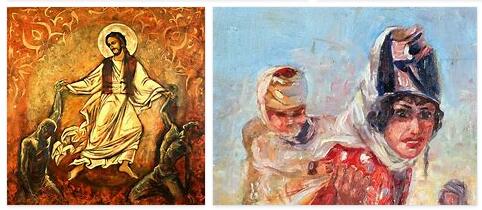Syrian art, the art of ancient Syria from the 4th millennium to the 6th / 4th millennium. Century BC Chr.
According to andyeducation, part of the art of the Ancient Orient in the historical cultural area Syria-Palestine, which extends from southern Anatolia through the territory of today’s Syria (which includes parts of northern Mesopotamia) and Lebanon to northern Israel (Syria, history; to the coastal landscape of Canaan). Never politically united and a transit country for traders, armies and nomads, ancient Syria was exposed to various influences from Egypt, Mesopotamia and Asia Minor (Hittites, Hurrians, Urartians). With the conquest of Syria by Alexander the Great in 333/332 BC The Hellenization of the area began.
In the early Syrian period became v. a. the flourishing culture of southern Mesopotamia (Uruk) took up, and Syrian cities had in the 3rd millennium BC. Part of the development of Sumerian art and culture. The first temples of Tell Brak and Habuba Kabira point to Uruk. In the northern Syrian area, in the agrarian Amk region (Turkey), an independent, black-painted ceramic was used and, with the bronze statuettes, a tradition of standing, walking, and seated figures made of metal. In the 3rd millennium BC BC, in the early dynastic epoch of Sumer, were in the Syrian area BC. a. Ebla and Mari the most powerful cities; Tell Brak, Tell Chuera, Tell Leilan and Tell Mozan (in northern Mesopotamia) are also important sites. In sacred architecture, the tradition of the axial Syrian long-space temple (long rectangular temple floor plan, partly with an anteroom) was established.
Ancient Syrian art: Many Syrian cities continued to exist in the times of Akkadian and ancient Babylonian art and experienced in the early 2nd millennium BC. A new heyday; the most important cities, in central Syria by the Amurrites, in northern Mesopotamia also strongly supported by the Hurrites, were initially Ebla and the excavations poorly accessible Aleppo, then came Karkemish, Mari, Alalach, Tuttul, Ugarit, Qatna (central Syria), Byblos, Hazor and others. emerged. Now the cities (or their citadels) were encased with mighty rammed earth walls. Elongated gate systems were created. The palace of Tuttul mimics the ancient Babylonian palace of Zimri-Lim in Mari, other old Syrian palaces pass on the early Syrian complex of Ebla, in which a high walled audience courtyard formed the focal point between the palace district and the lower town. Examples of old Syrian round sculptures are the bronze statuette of an enthroned ruler with a crown of horns from Qatna (Paris, Louvre), a head from the Jarim-Lim palace in Alalach (Antakya, museum) and the statue of a water-giving goddess from Mari (Aleppo, national museum). The mural painting in Mari (including investiture of King Zimri-Lim, Babylonian culture) is unique in the conception and processing of Babylonian and Egyptian elements (e.g. intercessory deity, Sphinx)). Ebla dates from the early 2nd millennium BC. Chr. Et al. a cult basin decorated in relief with rather older stylistic features, a priest statue and several fragments of round sculpture. The burial of important personalities in underground tombs was usually connected with the setting up of seated pictures, as has been proven in Qatna.
Central Syrian art: In the middle of the 2nd millennium (around 1600–1200 / 1100 BC) the large Canaanite trading city of Ugarit dominated the Mediterranean coast the sea peoples storm (around 1200 BC) Tell Tainat. The long-space temple was handed down, the palace type fully developed in the Ebla tradition (Ugarit). For the first time, Aegean influence can also be seen (ivory reliefs). The still formative Babylonian art had a particular effect on the Middle Syrian art (seated statue of Idrimi from Alalach; London, British Museum). Egyptian influences now also reached northern Syria via Ugarit (in older times, especially southern coastal cities, e.g. Byblos, showed Egyptian influences). The ivory work found in a small settlement (Tell Kamid el-Loz) shows the high level of the 14th century BC. Chr.
New Syrian Art: The artistic evidence from the end of the 2nd millennium and the 1st half of the 1st millennium BC BC (especially bronze and ivory works, also steles and monumental sculptures, e.g. the Aramaean prince Tarhunza from Milid near Malatya and the over 3 m high ruler statue from Zincirli) are partly very difficult to clearly identify the so-called late Hittite, Aramaic or Phoenician art (in the city-states on the Mediterranean coast) to be assigned, as all works incorporated influences from Assyria, Egypt and Urartu; the art of the “late Hittite” Aramaic successor states of the Hittite empire is also referred to as “Syrohethite”. Remnants of the New Syrian architecture were uncovered in Karkemisch, Guzana (Tell Halaf) and Zincirli. A temple of the weather god with numerous orthostats on the walls depicting gods and hybrid beings was found on the citadel of Aleppo. The Hilani type appeared in the palace construction (Hilani), so the palace of Guzana has a wide pillared hall in front of the throne room.
